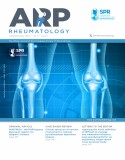Reliability and validity of the European Portuguese version of the EULAR Systemic Sclerosis Impact of Disease (ScleroID) questionnaire
Authors
Marcelo Neto; Fernando Albuquerque; Rodrigo Patrício; Margarida Vieira; Ruben Fernandes; Anabela Silva; Maria João Salvador; Tânia Santiago;
Keywords
Objective: The European Alliance of Associations for Rheumatology (EULAR) Systemic Sclerosis Impact of Disease questionnaire (ScleroID) is a new disease-specific and patient-derived outcome measure of systemic sclerosis (SSc) burden. This work aims to evaluate the feasibility, reliability and construct validity of the European Portuguese version of the EULAR ScleroID.
Methods: Participants were consecutively selected from all patients receiving care in the rheumatology department of a tertiary hospital who fulfilled ACR/EULAR classification criteria for SSc or EUSTAR criteria for Very Early Diagnosis of Systemic Sclerosis (VEDOSS). Feasibility was assessed by the proportion of missing ScleroID items. Reliability was assessed by internal consistency (Cronbach's alpha) and test-retest reliability (intraclass correlation coefficients [ICC]). Construct validity was evaluated by principal component analysis, by testing for ScleroID score differences between groups stratified by demographic data and disease subtypes, and by correlations between the ScleroID score and other measures of similar constructs (HAQ-DI, SHAQ, SF-36, EQ-5D, UCLA GIT 2.0 and ABILHAND-SSc). Floor and ceiling effects were measured.
Results: A total of 53 patients were enrolled, 12 of whom participated in a re-test. Two patients (3.8%) had missing data regarding at least one item of the ScleroID questionnaire. The ScleroID had a high level of internal consistency (Cronbach's alpha = 0.928) and moderate test-retest reliability (ICC 0.68, 95%IC 0.19-0.90). Principal component analysis revealed two components that were clinically meaningful, one mostly related to hand and musculoskeletal involvement, and the other to internal organ involvement. No floor/ceiling effects were identified for the total score. ScleroID was statistically significantly different between SSc subtypes, but there was no difference regarding sex, age or disease duration. Good correlations were found between the ScleroID and all other patient-reported outcomes, except for the SF-36 social role functioning, SHAQ Breathing VAS and SHAQ finger ulcer VAS scores (moderate correlation for all).
Conclusion: The European Portuguese version of the ScleroID score appears to be a feasible, reliable and valid measure of SSc disease burden. Further validation in other Portuguese cohorts is needed to ensure the generalizability of these findings.
Marcelo Neto
Unidade Local de Saúde de Coimbra
Fernando Albuquerque
Unidade Local de Saúde de Coimbra
Rodrigo Patrício
Centro de Medicina de Reabilitação da Região Centro-Rovisco Pais
Margarida Vieira
Instituto Português de Oncologia do Porto
Ruben Fernandes
University of Leeds
Anabela Silva
Unidade Local de Saúde de Coimbra
Maria João Salvador
Unidade Local de Saúde de Coimbra
Tânia Santiago
Unidade Local de Saúde de Coimbra
Unidade Local de Saúde de Coimbra
Fernando Albuquerque
Unidade Local de Saúde de Coimbra
Rodrigo Patrício
Centro de Medicina de Reabilitação da Região Centro-Rovisco Pais
Margarida Vieira
Instituto Português de Oncologia do Porto
Ruben Fernandes
University of Leeds
Anabela Silva
Unidade Local de Saúde de Coimbra
Maria João Salvador
Unidade Local de Saúde de Coimbra
Tânia Santiago
Unidade Local de Saúde de Coimbra





